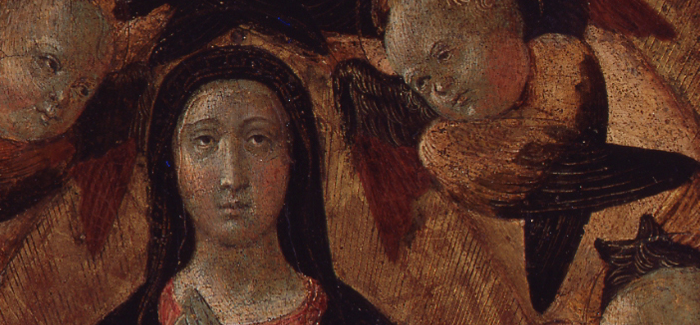
(Collection of the Smart Museum of Art)
“There is so much more to Renaissance art that people never see.”
“It’s such an immediate work, that’s what first drew me to it,” says Iva Olah, PhD’13, about Bernardino Fungai’s Madonna in a Mandorla Surrounded by Angels, painted in the late 15th or early 16th century. Olah wrote a dissertation on Florentine Renaissance art and is the Mellon Foundation curatorial intern at the Smart Museum. She organized the museum’s exhibition Wings, Speed, and Cosmic Dominion in Renaissance Italy, which features Fungai’s painted wood panel.
The exhibition, which runs through December 8, is intended to show a side of the Renaissance that isn’t all about canonical art. “There is so much more to Renaissance art that people never see,” Olah says.
Artworks like this Madonna were displayed in churches and functioned as worship objects. The mandorla, an almond-shaped aureole, is key to the adoration experience of the work. “It acts like a portal,” says Olah, “transporting a worshiper to a space where they can experience an intimate moment of prayer with the Virgin Mary.”
Compared to better-known Renaissance works, Fungai’s Madonna seems to lack artistic refinement. But its roughness, says Olah, adds to its power. “The simplicity of the work would have made it immediately relatable to a Renaissance viewer. They would have been able to identify and engage with the devotional theme of suffering through things such as the red color of the Madonna’s gown—symbolic of the blood of Christ.”
[[{"type":"media","view_mode":"media_original","fid":"915","attributes":{"alt":"","class":"media-image","height":"778","typeof":"foaf:Image","width":"460"}}]]
